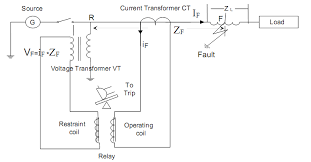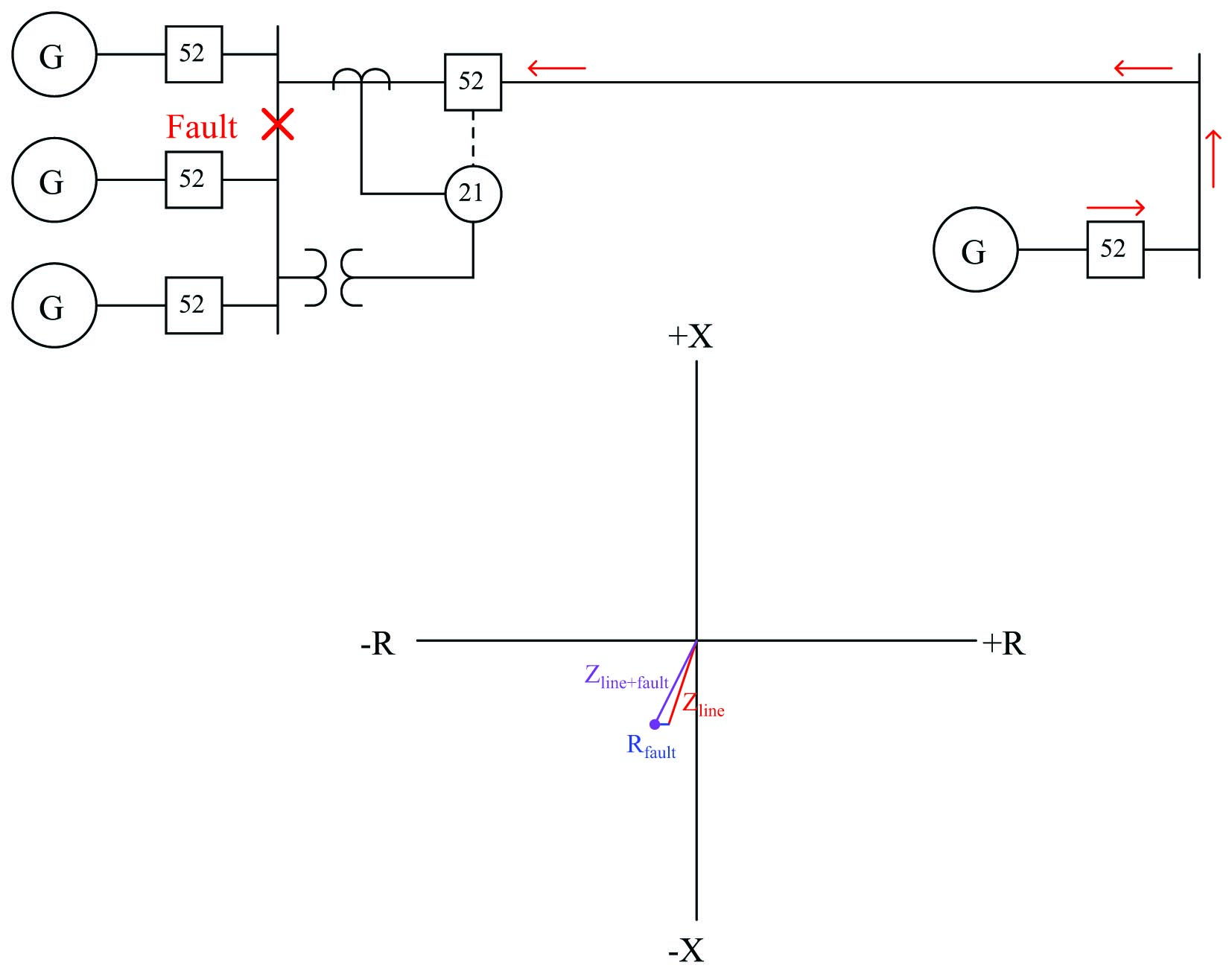These relays may sometimes be set based in percentages of the line impedances for example a typical setting for zone 1 is 80 of the impedance of the line in order to not reach the remote end the zone 2 can. T2 is usually of the order of 025 to 04 s.

Distance Relay Or Impedance Relay Working Principle Types Electrical4u
These relays are known as distance relay or impedance relay.

. Distance elements are used in line protection schemes for their definite reach. A time delayed tripping zone for back-up protection. T3 is in the range of 06 to 10 s.
The distance relay is a distance protection device that is used to determine the location of a. The below shows the balanced beam type definite. A distance element operates when.
Simple overcurrent protection lacks this property and its reach is highly dependent on the source impedance. Normally the k value is set to 1. The mechanism of this device was similar to a digital amplifier reiterating the signal and so permitting the signal which has to be propagated to the desired distance.
OLTAGES AND The paper analyzes key parts of todays distance elements. The mho characteristic for example is a popular design because it can be made from a single. Ground distance relay employing phase comparator measurement US4297740A en.
But the relay which was currently in use today was designed by Samuel Morse in the year 1840. Principles and Characteristics of Distance Protection. SOPSPOL 90 2 For decades various relay technologies ha ve derived and compared the operating and polarizing signals differently.
B ImZ ReZ Z R Reach Point Z a Z R I V Directional Supervision c Spring Pivot R I N 1 N 2 V Trip Contact. This paper describes an advanced protective relay system for high-speed transmission line protection. The operating state at a constant impedance of the point or line is shown in the diagram below.
Their characteristics have usually been created from comparators and various combinations of voltages and currents. ZA VAIA 3kI0 k is an adjustable quantity that allows you to change the ground distance calculations sensitivity to zero sequence current. Negative and zero sequence directional overcurrent unit for AC power transmission line protection US4161011A en 1979-07-10.
The distance relay is a basic overcurrent relay with a simple design. Construction of Definite Distance Relay. Below is a schematic of a distance relay with voltage and current characteristics.
Distance relays are one of the most important protection elements in a transmission line. Coordination is then obtained by adjusting the time delay of one or both of the overreaching zone 2 elements. Distance element regardless operation of a particular relay design.
Figure 5 shows very schematically the contact circuits of the principal units. We want a distance element to respond to faults short of a predetermined reach point and restrain for faults beyond that reach point. The constructional design of this type of relay can be a balanced beam-type or induction disc type that operates instantaneously for the fault up to a predetermined distance from the relay.
Supervise Distance Elements Directional elements add security to all distance elements. In the paper we present the high-speed. Decades of distance element design enhancements the industry arrived at a version of ts that is more distance elemen dependable and secure than in the early days of distance protection but only if the fault current sources behave like synchronous generators.
A distance relay on the Wehrendorf end of the Wehrendorf-Landesbergen 380kV. For situations where mutual coupling is not an issue the reach of the ground distance. Distance relays can provide effective transmission line protection.
The relay construction is divided into the following. Reverse Ground Faults and Ground Distance Elements The operating quantities for ground distance elements include residual current 3I0. In the case of zone 3 when the settings of relays at different locations overlap then the timer for the zone 3 of the furthest relay should be increased by at least 02 s to.
The distance relay is a distance protection element designed to measure the faulty point. An electromechanical distance may use a replica scheme. Distance relay measures the voltage V and current I at one end of the line.
More specifically the relay operates depending upon the impedance between the point of fault and the point where relay is installed. For transmission-line protection a single-phase distance relay of the impedance type consists of a single-phase directional unit three high-speed impedance-relay units and a timing unit together with the usual targets seal-in unit and other auxiliaries. Zones 1 and 2 preserve continuity of service or.
Taking into account. Definite Distance Relay. The extracted fault information v rybi ryb is then played to the relay which involves both real and non real time operations as shown in Figure 1.
Single phase-to-ground faults on a transmission line connecting the transmission a nd the distribution networks. Time Distance Relay impedance reactance or mho type. There is one type of relay which functions depending upon the distance of fault in the line.
Distance relay element design. October 25 2020. The paper presents a novel distance relay algorithm for the.
The most significant considerations in the design for construction are reliability simplicity of construction and circuitry. Long reaching forward set ground distance elements can pick up for a close-in reverse ground fault on. The ground distance element for SEL relays is calculated as follows.
21 Numerical Distance Relay Design The existing distance relay algorithm along with the most important features are first developed in Xilinx spartan 3A DSP 3SD1800A-FG676. Distance relay protection zones for a radial t1 is normally set instantaneously. The operation of this relay depends on the value of the impedance.
It trips the circuit breaker and closes the contacts when the impedance of the faulty point is less than the impedance of the relay. MN zone 2 and NO zone 2 relay elements. A definite reach is highly desired in distance elements.
Electromechanical design and.

Transmission Lines Distance Relay Basics And Tutorials Transmission Lines Design And Electrical Engineering Hub

Transmission Line Protection Software Distance Relay Setting Software

Principles And Characteristics Of Distance Protection

Distance Relay Working Principle Characteristics Its Classification

Distance 21 Protection Electric Power Measurement And Control Systems Automation Textbook
Stepped Distance Protection Characteristics For The Relay R1 Download Scientific Diagram

Distance 21 Protection Electric Power Measurement And Control Systems Automation Textbook

Transmission Lines Distance Relay Basics And Tutorials Transmission Lines Design And Electrical Engineering Hub
0 comments
Post a Comment